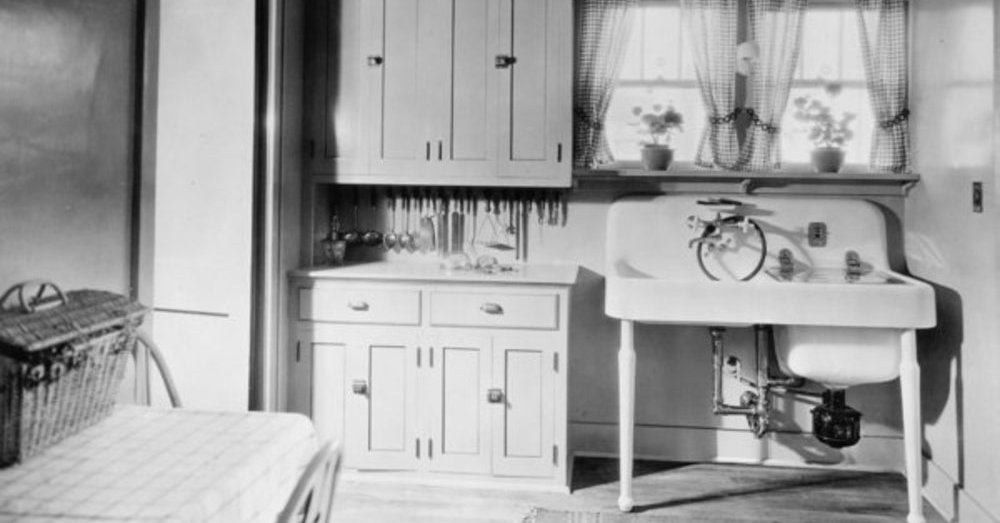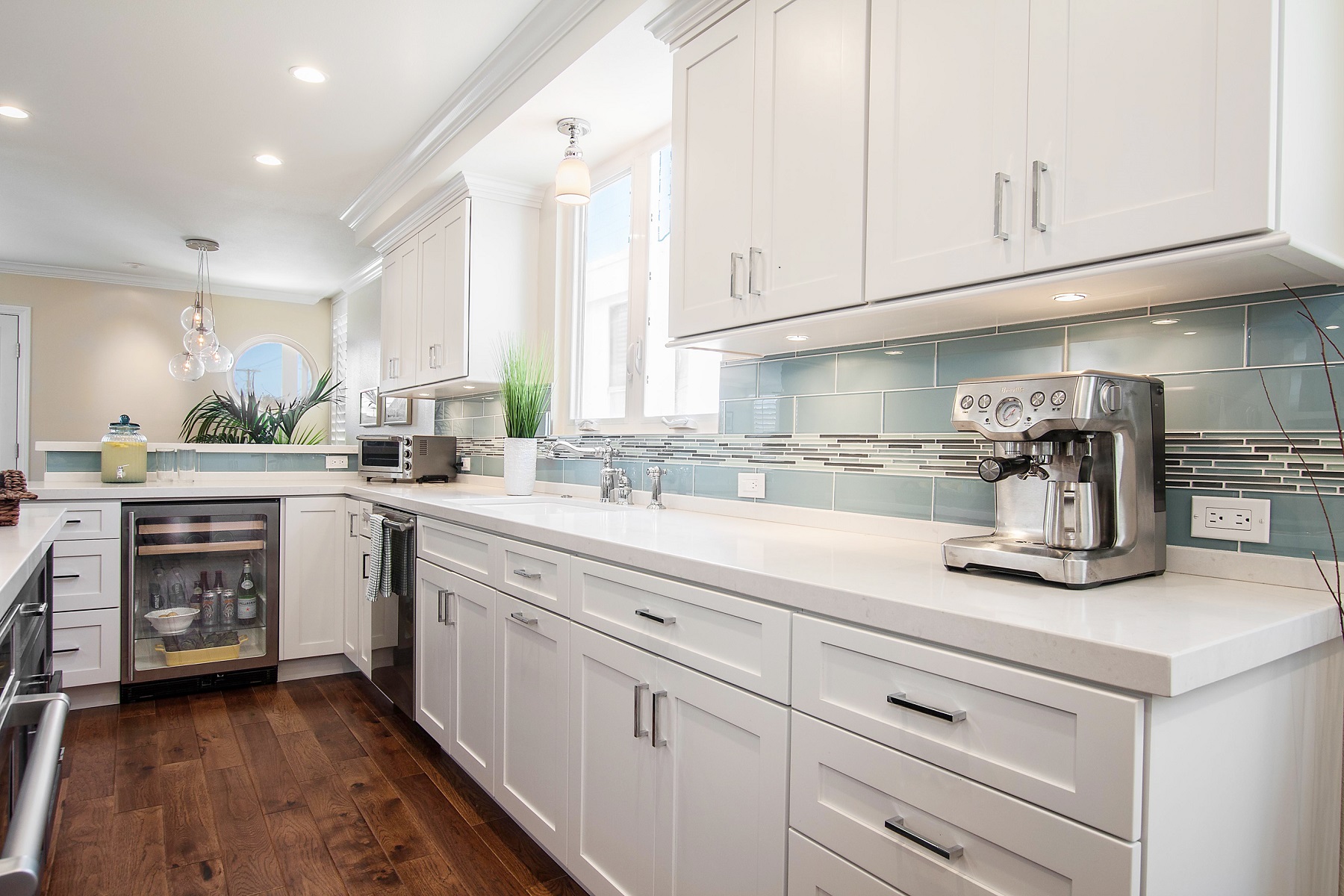The Evolution of Kitchen Cabinets

The kitchen, once a simple space for food preparation, has transformed into a central hub of modern living. This evolution is reflected in the design and functionality of kitchen cabinets, which have undergone a remarkable journey from basic storage solutions to sophisticated, personalized spaces.
Early Utilitarian Styles
Early kitchen cabinets were primarily functional, prioritizing storage and durability over aesthetics. In the 18th and 19th centuries, cabinets were often crafted from sturdy hardwoods like oak and pine. They featured simple designs with plain doors and shelves, serving as essential storage for essential cookware and ingredients. These early cabinets were typically freestanding and often placed against walls, reflecting the limited space and resources available at the time.
The Rise of Standardized Cabinets
The 20th century witnessed a significant shift in kitchen cabinet design, driven by the rise of mass production and the increasing desire for efficient and stylish kitchens. Standardized cabinet sizes and modular designs emerged, offering greater flexibility and affordability. This shift allowed for the creation of customized kitchens that catered to individual needs and preferences.
Materials: From Wood to Metal and Plastic
The materials used in kitchen cabinet construction have evolved alongside design trends. While wood remains a popular choice for its durability and natural beauty, other materials have gained prominence. Metal cabinets, particularly those made from stainless steel, offer a sleek and modern aesthetic, while being highly resistant to moisture and stains. Plastic cabinets, though less common, offer affordability and easy maintenance, making them suitable for budget-conscious kitchens.
Technological Advancements: Hinges, Drawers, and Appliances
Technological advancements have played a crucial role in shaping the features and functionality of kitchen cabinets. The introduction of robust hinges and drawer slides has greatly enhanced accessibility and ease of use. The development of built-in appliances, such as ovens, microwaves, and dishwashers, has further transformed kitchen cabinets into integrated systems, maximizing space efficiency and creating a seamless cooking experience.
Modern Kitchen Cabinet Trends

The kitchen, often considered the heart of the home, has undergone a dramatic transformation in recent years. Driven by evolving lifestyles, technological advancements, and a growing focus on sustainability, kitchen cabinet design has become a dynamic and exciting field. This section explores the most popular styles, finishes, and innovative designs that are shaping modern kitchens.
The Rise of Minimalism and Functionality
Minimalism has emerged as a dominant trend in kitchen design, influencing the selection of cabinet styles and finishes. This trend emphasizes clean lines, simple forms, and a focus on functionality.
- Flat-panel doors: Characterized by their smooth, uninterrupted surfaces, flat-panel doors offer a sleek and modern aesthetic. These doors create a sense of spaciousness and minimize visual clutter, aligning perfectly with the minimalist design philosophy.
- Integrated appliances: Modern kitchens seamlessly integrate appliances, such as refrigerators, ovens, and microwaves, into the cabinetry. This approach creates a streamlined look, maximizes space utilization, and fosters a sense of harmony in the kitchen environment.
- Open shelving: Open shelving, often combined with closed cabinets, adds a touch of visual lightness and allows for the display of decorative items or frequently used kitchenware. This design element complements the minimalist aesthetic by minimizing visual barriers and creating a sense of openness.
The Influence of Sustainable Materials
The increasing awareness of environmental concerns has driven a surge in the demand for sustainable materials in kitchen cabinet manufacturing. This trend reflects a shift towards responsible consumption and a desire to minimize the environmental impact of home renovations.
- Reclaimed wood: Reclaimed wood, salvaged from old buildings or structures, offers a unique character and reduces the need for newly harvested timber. The use of reclaimed wood not only contributes to sustainability but also adds a touch of rustic charm to modern kitchens.
- Bamboo: A rapidly renewable resource, bamboo is gaining popularity as a sustainable alternative to traditional hardwoods. Its natural beauty and durability make it an ideal choice for kitchen cabinets, offering a stylish and eco-conscious option.
- Recycled materials: Innovative manufacturers are incorporating recycled materials, such as plastic or metal, into their cabinet construction. This approach minimizes waste and promotes a circular economy, reducing the environmental footprint of kitchen renovations.
Smart Technology Integration
The integration of smart technology into kitchen cabinets is transforming the way we interact with our kitchens. These innovative designs offer enhanced functionality, convenience, and a touch of futuristic elegance.
- Integrated lighting: Smart lighting systems, often controlled by voice assistants or smartphone apps, can be incorporated into cabinets, providing adjustable illumination for various tasks and creating a dynamic ambiance in the kitchen.
- Touch-sensitive doors: Touch-sensitive doors eliminate the need for traditional handles, creating a seamless and minimalist look. These doors can be opened with a simple touch, adding a touch of futuristic sophistication to the kitchen.
- Remote control systems: Remote control systems allow for the operation of various kitchen functions, such as lighting, temperature control, and even appliance settings, from a smartphone or tablet. This technology offers convenience and enhances the overall functionality of the kitchen.
Factors Influencing Kitchen Cabinet Choices: Home Evolution Kitchen Cabinets

Choosing kitchen cabinets is a significant decision, influencing both the functionality and aesthetics of your kitchen. It’s a process that involves careful consideration of various factors, each playing a crucial role in shaping your final choice.
Budget
Budget is a primary factor in determining the type and quality of kitchen cabinets you can afford. Kitchen cabinets are available in a wide range of materials, finishes, and features, with price points varying significantly. Setting a realistic budget upfront helps narrow down your options and prevents overspending. For instance, if you’re on a tight budget, you might consider opting for pre-fabricated cabinets made from standard materials, while those with a larger budget might choose custom-made cabinets with premium finishes and unique features.
Space Constraints, Home evolution kitchen cabinets
The size and layout of your kitchen directly impact the type of cabinets you choose. Small kitchens often benefit from maximizing vertical space with tall cabinets and using corner cabinets to utilize every inch. Open shelving can also create a sense of spaciousness. Larger kitchens offer more flexibility, allowing for larger islands with built-in cabinets, pantry cabinets, and even dedicated appliance garages.
Lifestyle
Your lifestyle and daily routines influence the functionality and features you need in your kitchen cabinets. For example, a family with young children might prefer cabinets with pull-out drawers and adjustable shelves for easy access to items. A busy professional might opt for a streamlined design with integrated appliances and ample storage for meal prep.
Personal Preferences
Ultimately, the final decision on kitchen cabinet choices rests on your personal preferences. Consider your style, color scheme, and desired aesthetic. Do you prefer traditional, modern, or contemporary designs? Are you drawn to warm wood tones or sleek, minimalist finishes? Your personal taste should guide your selection, ensuring your kitchen reflects your personality and style.
Functionality and Ergonomics
Beyond aesthetics, functionality and ergonomics play a crucial role in kitchen cabinet design. Well-designed cabinets maximize storage space, optimize accessibility, and ensure ease of use. Features like soft-close drawers, pull-out shelves, and adjustable shelves enhance functionality and make daily tasks more efficient.
Kitchen Cabinet Configurations
| Configuration | Pros | Cons | Suitability |
|—|—|—|—|
| Base Cabinets | Ample storage space, can be customized with various features | Can be bulky, may limit floor space | Suitable for most kitchen layouts |
| Wall Cabinets | Maximize vertical space, ideal for storing frequently used items | Can be difficult to access items in higher cabinets | Suitable for most kitchen layouts |
| Corner Cabinets | Utilize often-wasted space, offer versatile storage options | Can be difficult to access items, may require specialized hardware | Suitable for smaller kitchens or corner layouts |
| Island Cabinets | Provide additional storage and work space, can be customized with features like sinks and cooktops | Can be expensive, may limit floor space | Suitable for larger kitchens |
| Pantry Cabinets | Offer extensive storage for dry goods, appliances, and other items | Can be bulky, may require dedicated space | Suitable for kitchens with ample space |
Home evolution kitchen cabinets – Home evolution in kitchens often centers around the cabinets, and for good reason! They’re the backbone of functionality and style. If you’re looking for a fresh, modern look that doesn’t sacrifice practicality, consider white frosted glass kitchen cabinet doors.
They offer a touch of elegance while still allowing you to display your favorite dishes and decor. Ultimately, choosing the right cabinets is a personal journey, one that can transform your kitchen into a space you truly love.
Home evolution in kitchens often involves embracing clever storage solutions, and that includes finding a place for everything, even the seemingly mundane ironing board. The ironing board furniture cabinet is a perfect example of how form and function can blend seamlessly.
This ingenious piece of furniture not only tucks away the ironing board, but it also adds a touch of elegance to your kitchen’s design, a testament to how home evolution can be both practical and stylish.
